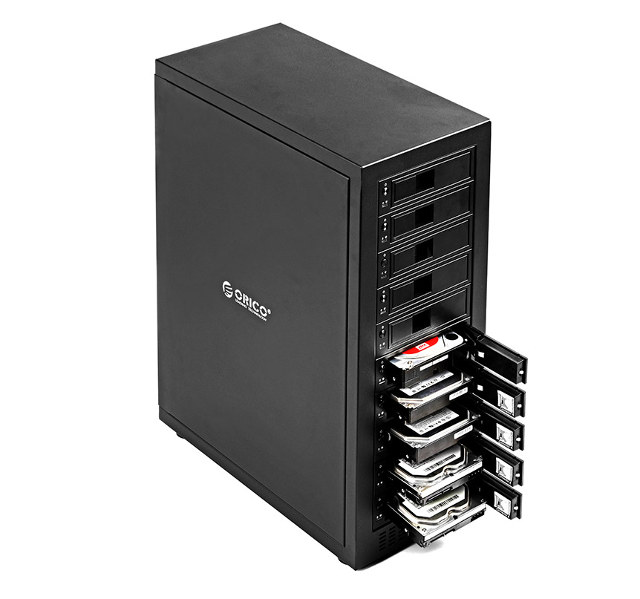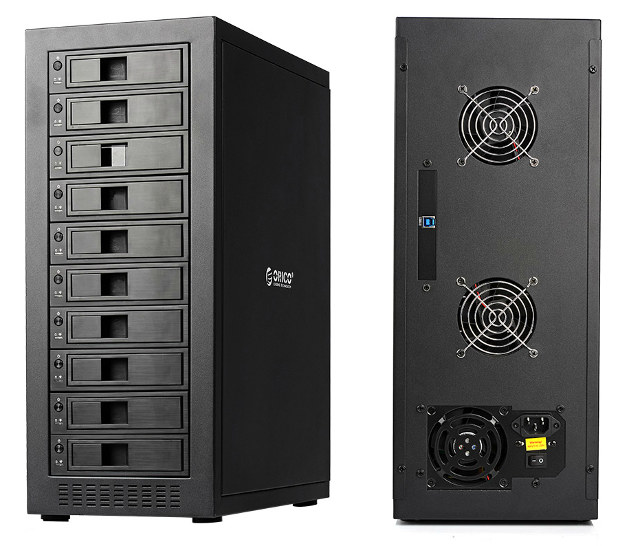USB expansion drives and multi-bay NAS devices are both very common form of storage which have different applications, but I had never thought or seen multi-bay USB expansion drivers until I came across ORICO NS200U3 “2-bay USB 3.0 hard drive dock” on GearBest (~$82) that can handle two 3.5″ hard drives.
This piqued my interest, so I went to ORICO website looking for models supporting more hard drives, and found ORICO 1088USJ3, a 10-bay USB 3.0 to SATA enclosure that can provide up to 80TB of local storage with 8TB drives.
 ORICO 1088USJ3 specifications:
ORICO 1088USJ3 specifications:
- Storage – 10x SATA III slots up to 6 Gbps for 3.5″ HDD / SSD drive (up to 8TB per drive)
- Output Interface – USB 3.0 device port up to 5 Gbps
- Power Supply – 100-240V AC 50-60Hz
- Protection – Over-current, over-voltage, short circuit, overheat, and power leakage.
- Dimensions – 389(L) x 203(W) x 501(H)mm (aluminum enclosure)
- Weight – 11.16kg
The box is said to work with Mac OS, Linux, Unix, and Windows 98 and above, which should be expected since it will likely be seen as a normal USB mass storage system from the operating systems side. You won’t need any tools to install the drives, and hot swapping is said to be supported.
The system implements “Intelligent Dormancy” which decreases heat and wear of hard drives, and saves energy.

That’s a fairly old product since it was announced in 2013, but I only noticed it now. Yet, I could not find any reviews of the 10-bay model, and I don’t know if it is seen as a single drive while connected, and whether it supports RAID or not. One of the 5-bay models appear to be more popular, and it’s easier to find reviews such as the one below for ORICO 9558U3 model, and we’ll see each drive is seen independently by the system. If you’re using a Linux computer or board, you should be able to use LVM to show all drives as one.
There’s another 5-Bay model (9558RU3) with switches on the back used to configure RAID.
The 10-bay model is pretty hard to buy now, and may even be discontinued, but you’ll find ORICO 9558U3 5-bay DAS (Direct Access Storage) for $159 and up on Amazon US, eBay, Aliexpress, and others. ORICO is not the only game in town, and TerraMaster D5-300C 4-bay enclosure with a USB type C connector is fairly popular on Amazon and sold for $229.99. Users’ reviews are usually positive, but there are a few complains about noise, performance, and power supply.

Jean-Luc started CNX Software in 2010 as a part-time endeavor, before quitting his job as a software engineering manager, and starting to write daily news, and reviews full time later in 2011.
Support CNX Software! Donate via cryptocurrencies, become a Patron on Patreon, or purchase goods on Amazon or Aliexpress




